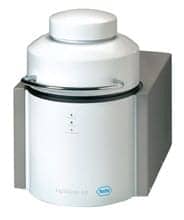
In this month’s cover feature on point-of-care testing (POCT), Frank LaDuca, PhD, chief science and technology officer for Polymer Technology Systems, recalls the early years of POCT as a “renegade” period. Labs were suspicious—that their business was being taken away, that they were losing control of the diagnostic process, and also about the quality of the tests themselves. Those days have passed, however, as POCT has come into its own and now frequently brings together both laboratorians and caregivers, along with the tests’ vendors, into collaborative relationships.
As described in this month’s feature, the trend toward point of care is being driven by a number of factors, chief among them the decentralization of health care. More and more patients are being seen and adminstered to outside of a hospital, a trend that is only expected to grow. Concerns about POC tests’ accuracy remain at the forefront of labs, but when a quick turnaround is required, there is no argument that they save time.
In recognition of the increasingly important role of POC diagnostics, the Clinical and Laboratory Standards Institute (CLSI) is preparing the document “POCT09—Selection Criteria for POCT Devices” for release, which is intended to serve as an aid to laboratory and facility management to simplify and facilitate the selection process, but will also allow evaluation of devices to identify those that are optimal to the patient care setting and population served. Look to CLP for coverage of this report, as well as future developments in the point-of-care space.
Point of care came to the allergy testing arena in January of this year when the FDA approved Phadia’s ImmunoCAPRapid Reader II. This single-use test delivers results in 20 minutes on 10 of the most common inhalant allergens in the United States, including dust mites, weeds, dog, cat, and mold. The significance of allergies cannot be overlooked. Allergy is the fifth leading cause of chronic disease in the United States and, among children, the third most common chronic condition; according to the Asthma and Allergy Foundation of America (AAFA), allergies exact an annual cost of close to $7 billion.
As the CLP team looks toward War College in April and CLMA this May, we welcome those of you also attending to reach out to us to arrange a time to visit. I look forward to the opportunity to renew acquaintances and make new ones. In the meantime, please feel free to get in touch with either CLP’s associate editor, Stephen Noonoo, or myself to share your thoughts on issues facing the clinical lab industry. And if you are not receiving our weekly newsletter, CLPrime, we invite you to [removed][removed]sign up here[/removed][/removed].
Best regards,
Suzanne Clancy, PhD
editor, CLP
(858) 793-9533






